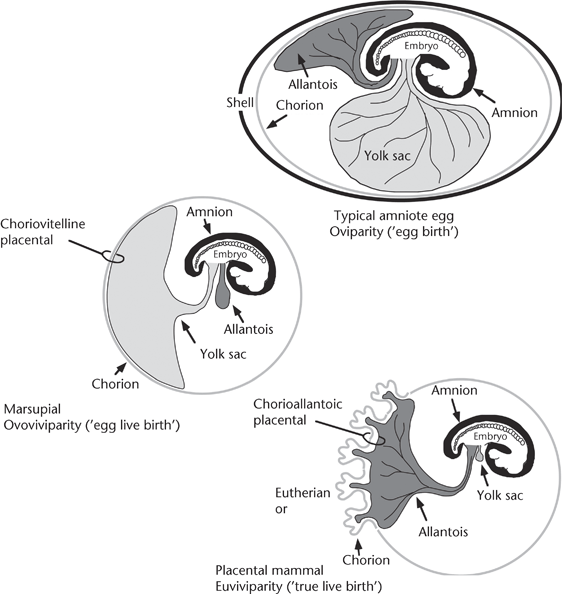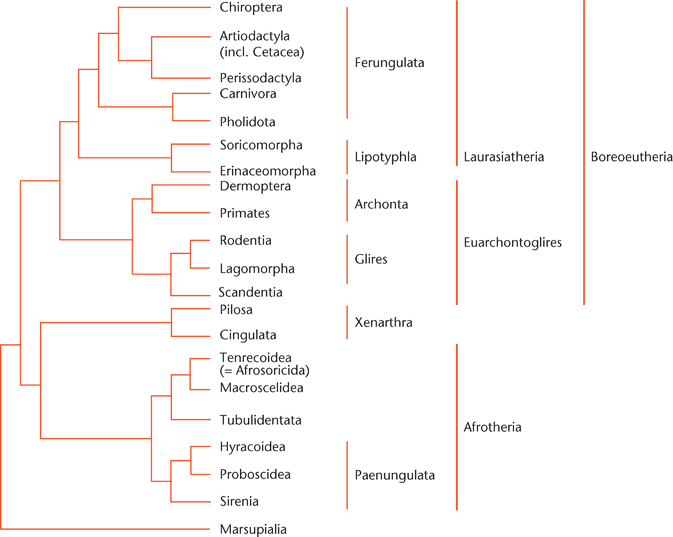Eutheria includes one of three major clades of mammals, the extant members of which are referred to as placentals.
With almost 4800 extinct and extant genera, including 1135 extant (living) genera and over 5000 extant species arrayed in 20 extant orders, placentals (extant eutherians) are the most taxonomically diverse of the three branches of extant mammals. Eutherians appear in the fossil record by 105 Ma (million years ago) and possibly by 160 Ma. Extant orders of eutherians (placentals) do not occur in the fossil record until after dinosaur extinction 65–66 Ma. Molecular studies generally agree with these dates for the origin of placental orders, but place the origin of Eutheria at approximately 190 Ma and groups related to living orders of mammals by 100 Ma. Placentals vary greatly in size (whales down to shrews), in locomotion (flying, swimming, climbing, burrowing, running, etc.), and diet (meat, leaves, fruit, termites, etc.). They have a high resting temperature (homiothermy) and produce this heat internally (endothermy). They have a chorioallantoic placenta that allows a long gestation for development.
Key Concepts:
-
Eutherian mammals arose somewhere between 105 and 190 Ma.
-
Extant eutherian mammals, known as placentals, may have originated as long as 100 Ma based on molecular studies.
-
Placental orders first began to appear and diversify approximately 65 Ma (±10 My) based on both molecular and fossil studies.
-
There are 20 orders of placentals comprised of 1135 living genera and over 5000 species.
-
Placentals have a high resting temperature (homiothermy) and produce this heat internally (endothermy).
-
Placentals have a chorioallantoic placenta that allows a long gestation for development, hence their name.
-
Placentals are arguably the most ecologically diverse group of living vertebrates as they vary greatly in size, locomotory types, and diet.
Keywords: placenta; chorion; allantois; amnion; incisor; canine; premolar; molar; corpus callosum; endothermy









